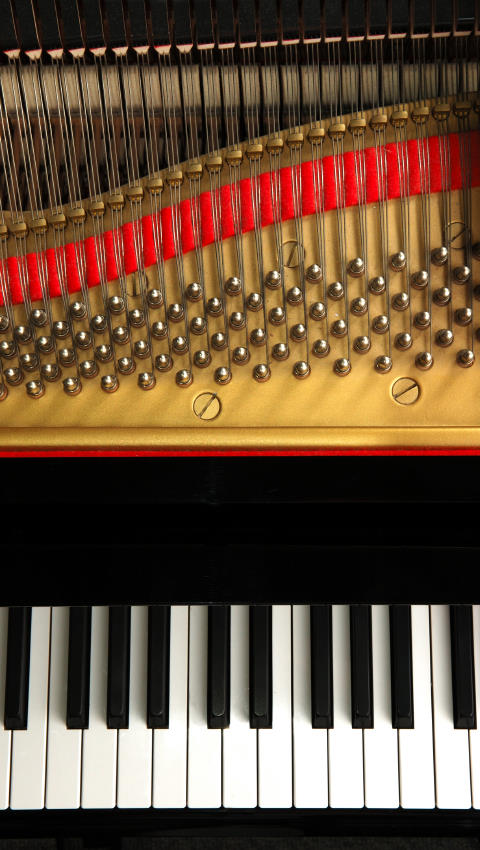
Piano Frequently Asked Questions (FAQ)
- What makes a piano go out of tune?
- Changes in temperature and/or humidity. A piano doesn’t know if it is played or not, so playing it (or not playing it) does not affect the tuning). The strings and soundboard contract and expand with temperature change, however not all uniformly, so hearing the various differences of string tension other than what it should be will cause the notes to sound bad.
Additionally, a piano should be tuned if it is moved at all. Usually something gets knocked out of whack in a move.
- How often should a piano be tuned?
- Because of the above, it would be ideal to tune it every time you sit down to play it. However, that is unrealistic for the household piano both in terms of expense and time. The frequency of tunings should not be less frequent than once a year unless the piano is used in a facility such as church or school, or after a piano is moved.
- Is there a standard pitch for tuning a piano?
- Yes – The strings representing the tone A above middle C should be set to vibrate when struck at 440 times per second which would result in the true pitch of A. The other tones of the piano are tuned in ratio to that. However, on some pianos where the pitch is considerably lower, it might be necessary to raise the pitch as far as it will go and tune the piano to itself from that point. The reason is that sometimes the piano has to adjust to the new tension before a tuner can take the next step toward bringing it up to standard A-440 pitch. On some pianos, tuning it up to standard pitch is sometimes impossible without breaking strings or causing damage. Many families may often be satisfied with the piano being in tune to itself without the risk of raising the pitch to A-440. If this is the case, the only time one would notice a difference is when playing a piano with such a tuning along with one made on a recording with another piano.
- What should I clean the piano with?
- If the casing is made of wood, you could probably use any wood cleaner or polish that you use on other wood furniture in your home. On pianos with a high-gloss finish, you should use special cleaning products for those surfaces. I recommend a very mild detergent for cleaning the keys. Make sure it is non-abrasive, dampen a rag and wipe the keys. BE VERY CAREFUL that no liquid seeps into the cracks between the keys.
Some of the keys of the piano don’t feel like they play properly when depressed.
- Is fixing that part of the tuning?
- Usually not. A piano tuning means adjusting the tension on the strings so that they sound in tune to each other (see no. 3 above). Parts that do not work properly often require extra time and labor on the part of the technician where he/she may have to take more of the piano apart to get to the problem, other than what he/she would do with a mere tuning. Sometimes new parts may be needed.
- What can I do to maintain my piano properly?
- Have it tuned at least once a year.
Keep it in an environment that has as little fluctuation of temperature as possible.
Keep foreign objects, such as pencils, small toys, etc. from getting inside the piano,
And try to keep plants and drinks off the piano’s top.
Climate control devices made specifically for pianos exist and contribute to the life of the piano when environmental conditions might otherwise harm the piano.

